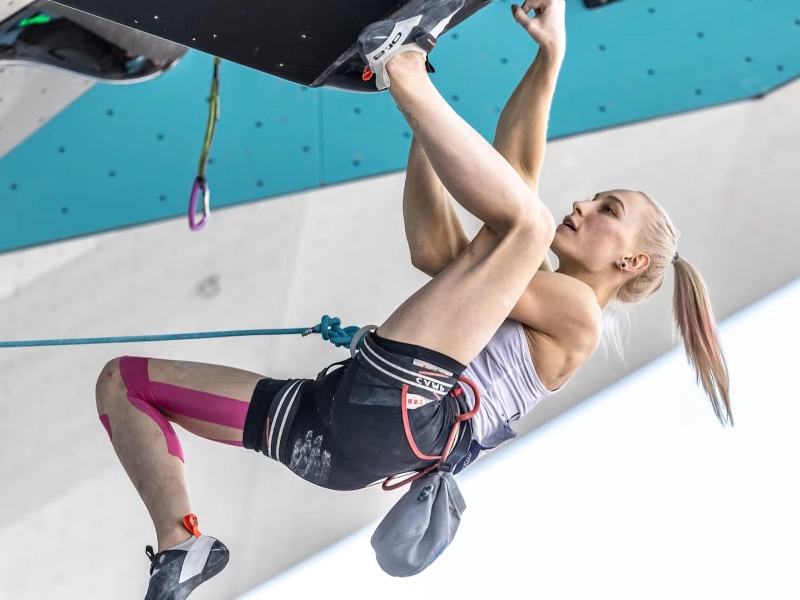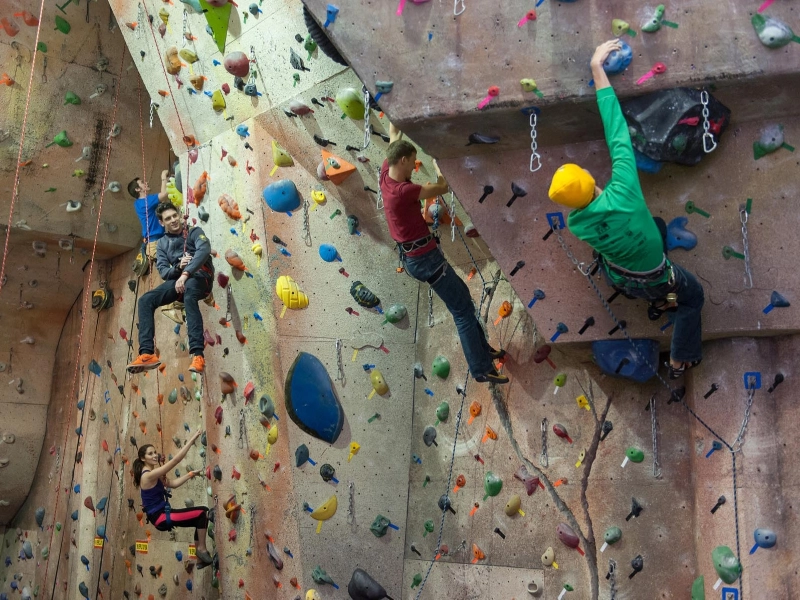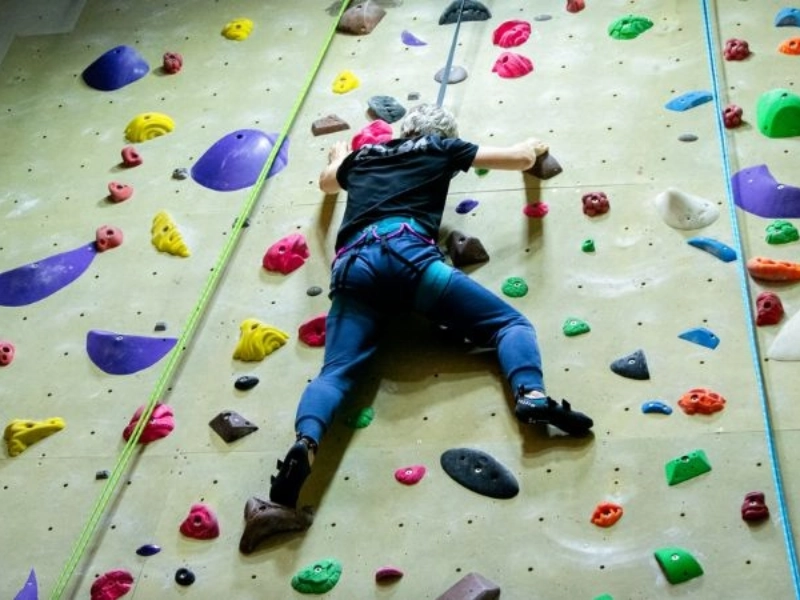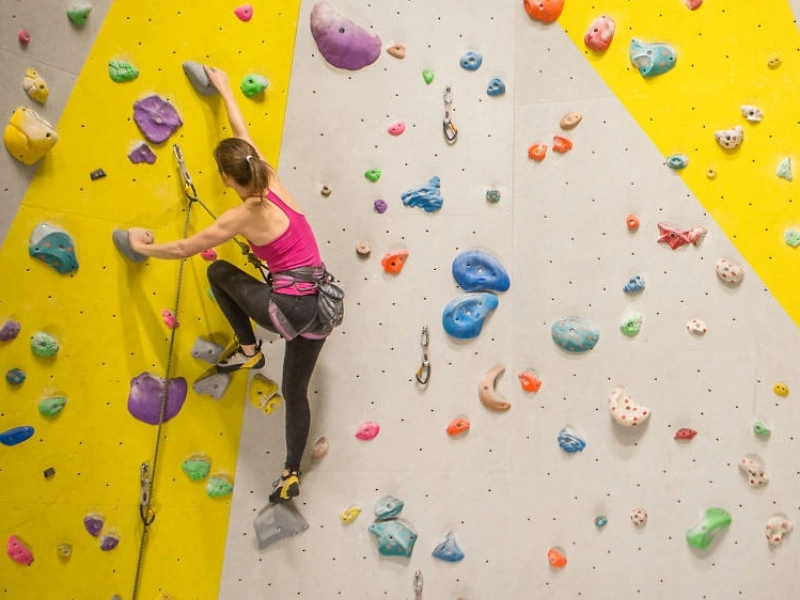Climbing exercises the grip muscles and increases power endurance. This is crucial for avoiding injuries because conditioned muscles are better able to withstand repeated tension. A fantastic exercise for forearm endurance is the pull-up bar hang. They just need your bodyweight and can be done at any gym or at home.

 Climbing is an excellent type of exercise that trains your strength, endurance, and flexibility all at once. Enhancing balance, coordination, and motor skills are further benefits of it. The reason for this is because climbing necessitates exact hand-eye coordination in order to move up and over the wall.
Too much gripping of holds by novice climbers puts a lot of strain on the forearm muscles. This causes pain by overtaxing the tendons. By engaging in targeted forearm strengthening activities, you can lessen this discomfort and increase the frequency of your climbing sessions.
The flexor muscles of the forearm aid in bending the elbow, while the extensor muscles help to lengthen it. By balancing the strengths of these two groups through targeted forearm training, gripping force on crimps and slopers will be increased. Engaging in power endurance workouts will also improve your capacity to withstand the pump and sustain longer ascents. This is particularly crucial if you intend to take on a challenging assignment or reach a new redpoint.
Climbing is an excellent type of exercise that trains your strength, endurance, and flexibility all at once. Enhancing balance, coordination, and motor skills are further benefits of it. The reason for this is because climbing necessitates exact hand-eye coordination in order to move up and over the wall.
Too much gripping of holds by novice climbers puts a lot of strain on the forearm muscles. This causes pain by overtaxing the tendons. By engaging in targeted forearm strengthening activities, you can lessen this discomfort and increase the frequency of your climbing sessions.
The flexor muscles of the forearm aid in bending the elbow, while the extensor muscles help to lengthen it. By balancing the strengths of these two groups through targeted forearm training, gripping force on crimps and slopers will be increased. Engaging in power endurance workouts will also improve your capacity to withstand the pump and sustain longer ascents. This is particularly crucial if you intend to take on a challenging assignment or reach a new redpoint.
 It can be quite pleasant to put in a lot of effort on a challenging climb and see that you are making progress. In that sense, climbing is similar to video games in that it requires effort to advance in level and acquire new abilities.
Strong forearm muscles are essential for climbers to stabilise their elbow joint and grasp the wall and rope. The flexor and extensor muscles are the two main muscle groups that make up the forearm. The fingers and wrists are bent by the flexor muscles and extended by the extensor muscles.
The greatest strategy to develop your forearms is to include workouts in your training routine that are specifically designed for climbing. While some exercises emphasise strength, others put endurance first to give you a firm grip. It's also beneficial to do forearm stretches, which will aid to boost your performance by stretching out your muscles.
It can be quite pleasant to put in a lot of effort on a challenging climb and see that you are making progress. In that sense, climbing is similar to video games in that it requires effort to advance in level and acquire new abilities.
Strong forearm muscles are essential for climbers to stabilise their elbow joint and grasp the wall and rope. The flexor and extensor muscles are the two main muscle groups that make up the forearm. The fingers and wrists are bent by the flexor muscles and extended by the extensor muscles.
The greatest strategy to develop your forearms is to include workouts in your training routine that are specifically designed for climbing. While some exercises emphasise strength, others put endurance first to give you a firm grip. It's also beneficial to do forearm stretches, which will aid to boost your performance by stretching out your muscles.
 Every muscle in the body is worked out when climbing, and endurance is developed—a skill that is essential for the sport. Additionally, it improves the core muscles, which results in a physique that is stronger, more stable, and less prone to injury. In order to strategize and think quickly, continuously calculating which foot or hand hold will bring you closer to your objective, the sport also demands a high level of mental toughness. A climb that appeared insurmountable can be conquered, which boosts your confidence and gives you a sense of accomplishment unlike anything else. It's also a really empowering experience.
People of all ages and genders can enjoy a wide range of climbing grades. From outdoor rock climbing to indoor bouldering. For individuals who want to push themselves but don't want to free climb a cliff, there is even help climbing available. Playing this sport outside is a fantastic method to increase your strength and fitness levels!
Every muscle in the body is worked out when climbing, and endurance is developed—a skill that is essential for the sport. Additionally, it improves the core muscles, which results in a physique that is stronger, more stable, and less prone to injury. In order to strategize and think quickly, continuously calculating which foot or hand hold will bring you closer to your objective, the sport also demands a high level of mental toughness. A climb that appeared insurmountable can be conquered, which boosts your confidence and gives you a sense of accomplishment unlike anything else. It's also a really empowering experience.
People of all ages and genders can enjoy a wide range of climbing grades. From outdoor rock climbing to indoor bouldering. For individuals who want to push themselves but don't want to free climb a cliff, there is even help climbing available. Playing this sport outside is a fantastic method to increase your strength and fitness levels!